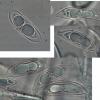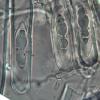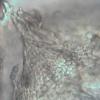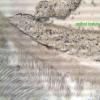
20-12-2025 23:08
Patrice TANCHAUDBonsoir, récolte sur sol sablonneux dans l'arri�

21-12-2025 09:32
Hello.A tiny ascomycete found embedded in wood in

20-12-2025 15:47
Mirek GrycHi.These grew on pine wood that was heavily covere

18-12-2025 21:17
Pol DebaenstThe identification took me to Byssonectria deformi

15-12-2025 07:09
 Danny Newman
Danny Newman
indet. Rutstroemiaceae sp. on unk. fallen leavesMc

19-12-2025 10:10
Patrice TANCHAUDBonjour, récolte réalisée en milieu dunaire, a

18-12-2025 17:23
 Bruno Coué
Bruno Coué
Bonjour,je serais heureux d'avoir votre avis sur c

18-12-2025 18:07
Margot en Geert VullingsThese plumes were found on rotten wood.They strong

Dear friends,
here is another collection from Ethiopian mountain rain forest.
I think it is Cookeina colensoi, especially as the shape and size of the spores don't leave much alternatives,or does it?
The apothecia are approx. 1-1,5 cm in diameter, centrally stipitate by a short and thin, but well develloped stipe. The stipelength is approx. half of the cup diameter. Hymenium color is alutaceous, comparable to the hymenium of Tarzetta. The exterior is paler, nearly whitish. The margin is finely crenulate to fimbriate.
Spores are somewhat fusoid, not symetrical, 33-42 x 10-12 µm, smooth, and with knob-like protrudings at each spore end. These protruding can grow up to 2-3 µm in diameter. It seems that they devellop with spore maturity and may be they are a kind of germination of the spore?
Has someone experience with Cookeina colensoi and can confirm the determination (or cancel it ....)
I have the paper of Moravec, where SEM fotos of the spores are illustrated, showing them as being finely rugulose. I couldn't observe this in my material in light microscope.
best regards,
Andreas

i think this is the best choice! but i would exlude possible striation in cotton-blue because of p. venezuelae, which has also long, narrow spores with apiculi.
best
dirk




